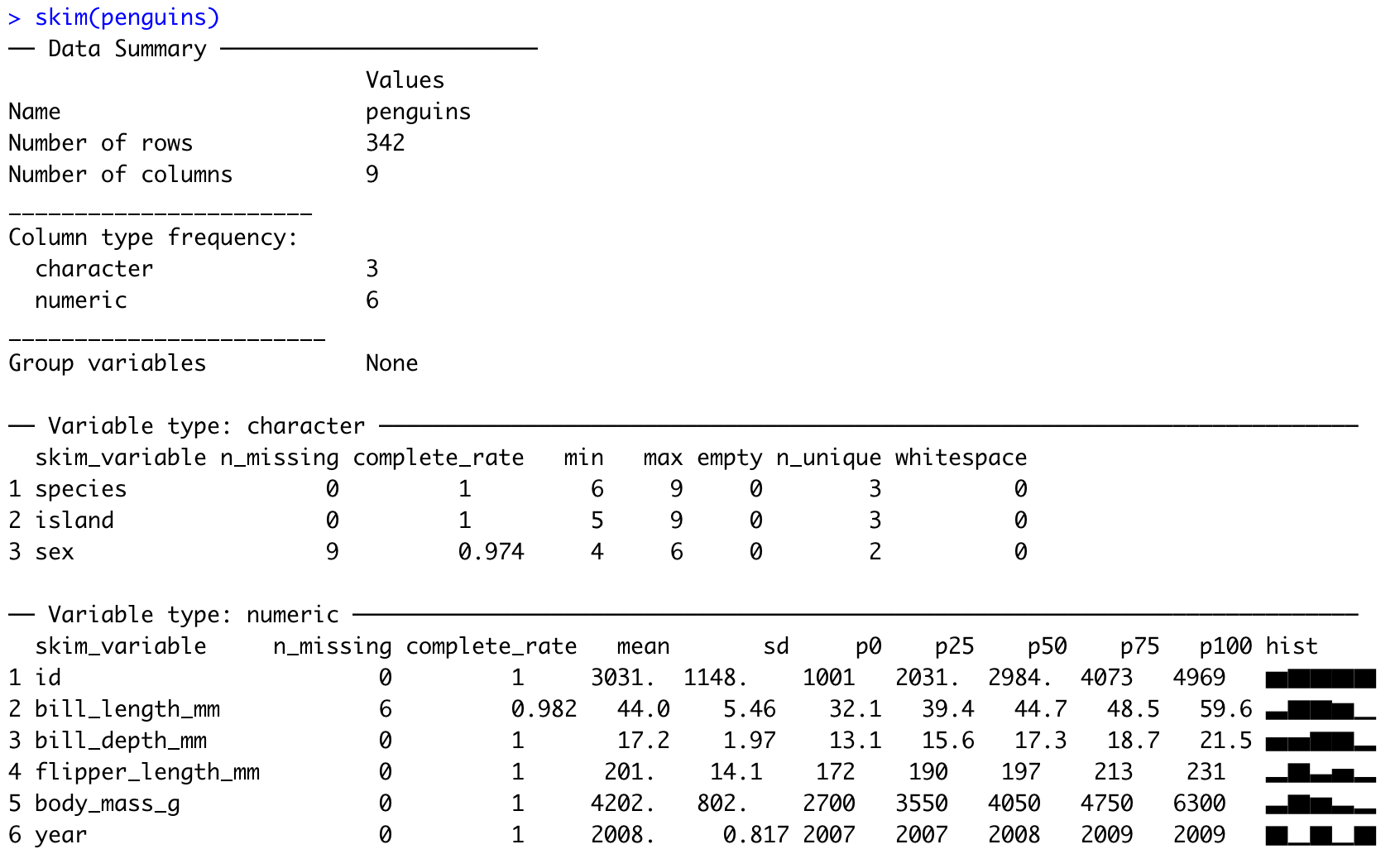Practice Solutions to
Intro to R and Rstudio for EDA - Part 1
Jessica Minnier, PhD & Meike Niederhausen, PhD
OCTRI Biostatistics, Epidemiology, Research & Design (BERD) Workshop
2020/09/16
Practice 1 (pg. 1)
Create a new Rmd file to type the code and answers for the tasks below in it.
Remove the template text starting with line 12 (keep the YAML header and setup code chunk), and save the file as
Practice1.RmdCreate a new code chunk.
Create a vector of all integers from 4 to 10, and save it as
a1.What does the command
sum(a1)do?What does the command
length(a1)do?Use the
sumandlengthcommands to calculate the average of the values ina1.Knit the Rmd file.
Answers to Practice 1 questions
#4 Create a vector of all integers from 4 to 10, and save it as a1.
a1 <- 4:10#5 What does the command sum(a1) do?
sum(a1)[1] 49sum adds up the values in the vector
#6 What does the command length(a1) do?
length(a1)[1] 7length is the number of values in the vector
#7 Use the commands to calculate the average of the values in a1.
sum(a1) / length(a1)[1] 7# this is equivalentmean(a1)[1] 7Practice 1 (pg. 2)
- Run the code below to install the
tidyverseandjanitorpackages in R, which we will be using in upcoming slides.- If you get a message about restarting R, click Yes.
- If you get an error message (warnings are ok), ask a helper.
# install.packages("tidyverse")# install.packages("janitor")- After running the code, comment out the code with
#in front of the commands so that they do not run when knitting the file.- We only need to install packages once and thus do not need to run this code again.
- Take a break!
Practice 2
Create a new Rmd for Practice 2 or continue in your current Rmd.
Find the median bill length. Is the median bill length similar to the mean?
What is the distance between the smallest and largest bill depths?
What does the
range()command do? Try it out on the bill depths.Make a scatterplot with bill length on the x-axis and bill depth on the y-axis. What is the relationship between bill length and depth?
Knit your Rmd file.
If you have time,
- install the package
skimr - load the package
- run the command
skim(penguins) - what does the
skimcommand do?
- install the package
Practice 2 Answers
#1 Find the median bill length. Is the median bill length similar to the mean?
median(penguins$bill_length_mm, na.rm = TRUE)[1] 44.7mean(penguins$bill_length_mm, na.rm = TRUE)[1] 44.00387The mean and median bill lengths are similar to each other.
#2 What is the distance between the smallest and largest bill depths?
max(penguins$bill_depth_mm) - min(penguins$bill_depth_mm)[1] 8.4The distance between the smallest and largest bill depths is 8.4 mm.
*Note that we do not need to use na.rm = TRUE for bill depths since there are no missing values.
#3 What does the range() command do? Try it out on the bill depths.
range(penguins$bill_depth_mm)[1] 13.1 21.5The range() command gives the minimum and maximum values.
#4 Make a scatterplot with bill length on the x-axis and bill depth on the y-axis. What is the relationship between bill length and depth?
plot(penguins$bill_length_mm, penguins$bill_depth_mm, xlab = "Length", ylab = "Depth", main = "Bill depth vs. length")
#6 If you have time,
- install the package
skimr - load the package
- run the command
skim(penguins) - what does the
skimcommand do?
# install.packages("skimr")library(skimr)skim(penguins)The skim() command gives summaries of each of the variables in the dataset.
